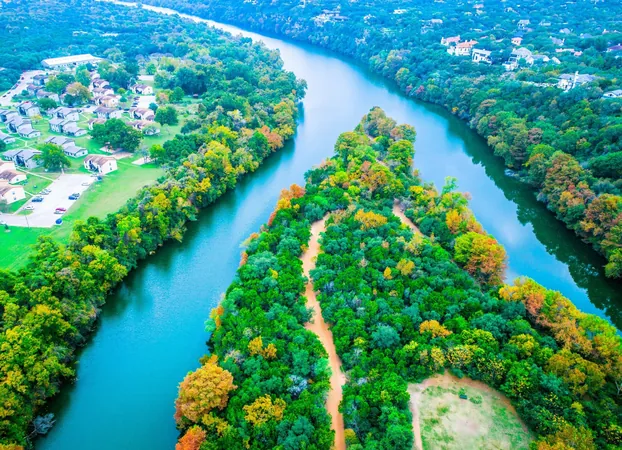
Rivers Unraveled: The Surprising Secrets Behind Their Splitting Paths
2025-07-18
Author: Kai
Discovering the Dynamics of Rivers
Rivers play a pivotal role in our ecosystem by transporting water, sediment, and nutrients from mountains to oceans. They carve pathways that sustain diverse life forms and human civilizations, yet one of their most intriguing behaviors—their tendency to split—has puzzled scientists for over a century.
At Last, Answers About River Splitting
New groundbreaking research from the University of California, Santa Barbara has shed light on why some rivers twist into a single meandering channel while others branch into multiple, intertwining streams. Geographer Austin Chadwick, who led the study, has uncovered that when rivers erode their banks faster than they can deposit sediment on the opposite banks, they begin to split.
The Important Distinction: Single vs. Multi-Threaded Rivers
Rivers are classified into two primary categories: single-threaded and multi-threaded. The latter, which includes the world’s largest river systems, has been less understood. Historical focus on single-threaded rivers presented a skewed understanding of river behavior due to their simpler structures.
A Curious Observation Ignites a Study
Chadwick’s fascination with multi-threaded rivers began in a lab tank when he noticed their continuous widening and splitting. This observation led him on a quest to explore whether similar patterns were evident in nature.
Digging Deeper with Satellite Technology
Using 36 years of satellite data from 84 rivers worldwide, the research team analyzed erosion and deposition processes using a technique known as particle image velocimetry, originally made for tracking particles in fluids. The results were striking.
The Erosion-Deposition Balance: Key to River Behavior
The study reveals that single-threaded rivers maintain a balance between erosion and deposition, allowing them to flow gracefully across the landscape. Conversely, multi-threaded rivers experience greater erosion, leading to the creation of multiple channels. While flow rates remain consistent, sediment primarily accumulates in the riverbed, forming islands and bars that delineate individual streams.
Implications for Flooding and Restoration Efforts
The research holds significant implications for understanding flood risks and how to rehabilitate altered waterways. As cities and agricultural fields have encroached on natural river landscapes, many rivers have been confined to narrow channels, disrupting ecosystems and exacerbating flood risks. For example, Hurricane Katrina's devastation was partly due to the Mississippi River's disconnection from its floodplain.
Unlocking Restoration Potential
This study also provides a formula for determining the necessary space and time required for a river to restore its natural state, taking into account its threading type. Remarkably, the findings indicate that single-threaded rivers need ten times more area than multi-threaded ones to regenerate.
Looking Ahead: Ongoing Research and Future Challenges
Researchers, like Chadwick at Columbia University and former colleague Greenberg at NASA, continue to investigate how river behaviors adapt over time, particularly in the wake of climate change and human activity.
Embracing the Complexity of Rivers
This pioneering research not only enhances our understanding of river dynamics but also guides us in coexisting more harmoniously with these vital waterways. Armed with new knowledge, we can better appreciate how rivers shape our world and find effective ways to restore their natural beauty.
The full study has been published in the journal Science.


 Brasil (PT)
Brasil (PT)
 Canada (EN)
Canada (EN)
 Chile (ES)
Chile (ES)
 Česko (CS)
Česko (CS)
 대한민국 (KO)
대한민국 (KO)
 España (ES)
España (ES)
 France (FR)
France (FR)
 Hong Kong (EN)
Hong Kong (EN)
 Italia (IT)
Italia (IT)
 日本 (JA)
日本 (JA)
 Magyarország (HU)
Magyarország (HU)
 Norge (NO)
Norge (NO)
 Polska (PL)
Polska (PL)
 Schweiz (DE)
Schweiz (DE)
 Singapore (EN)
Singapore (EN)
 Sverige (SV)
Sverige (SV)
 Suomi (FI)
Suomi (FI)
 Türkiye (TR)
Türkiye (TR)
 الإمارات العربية المتحدة (AR)
الإمارات العربية المتحدة (AR)